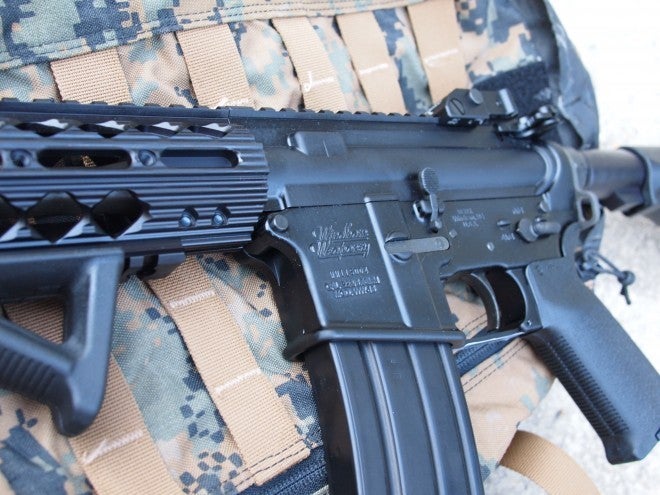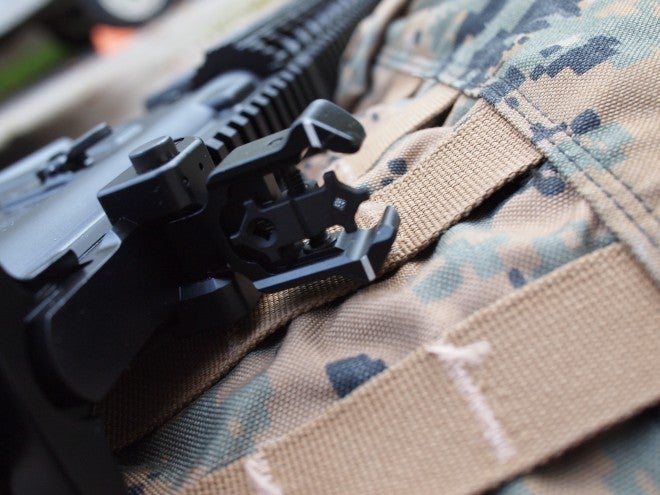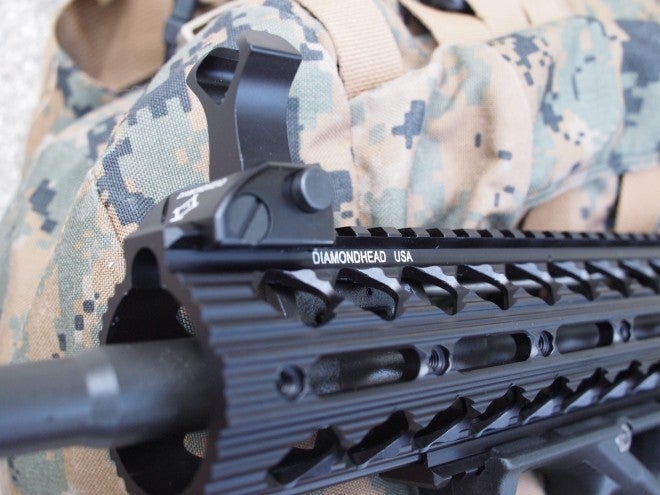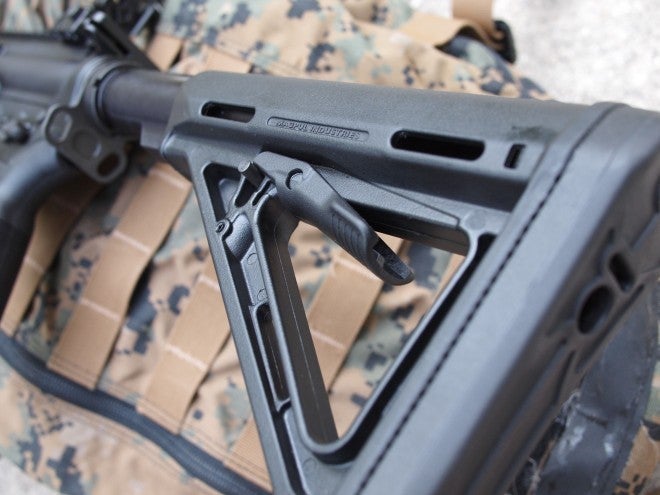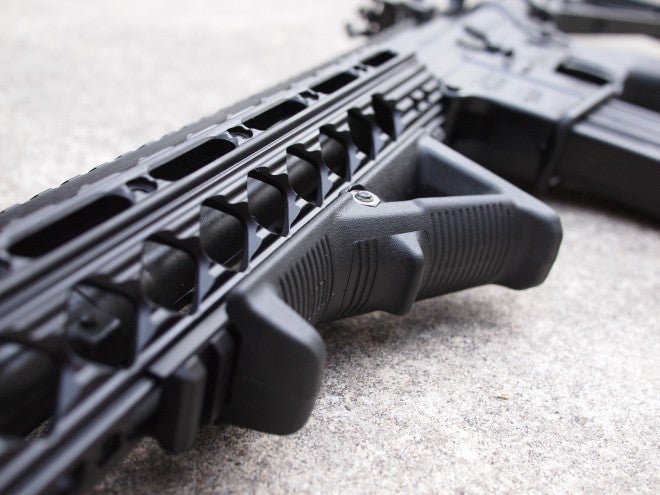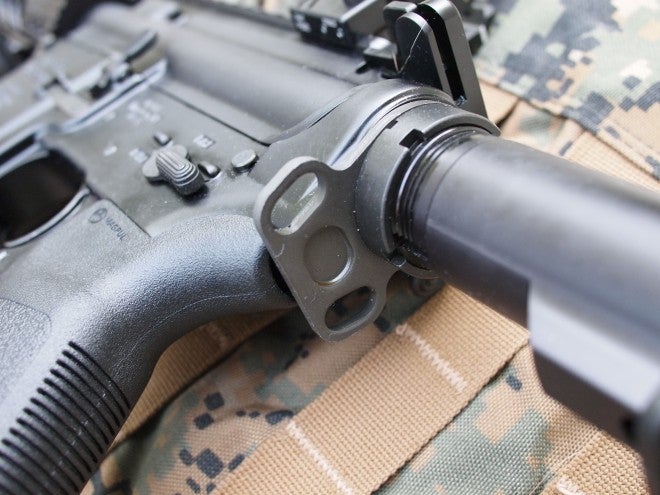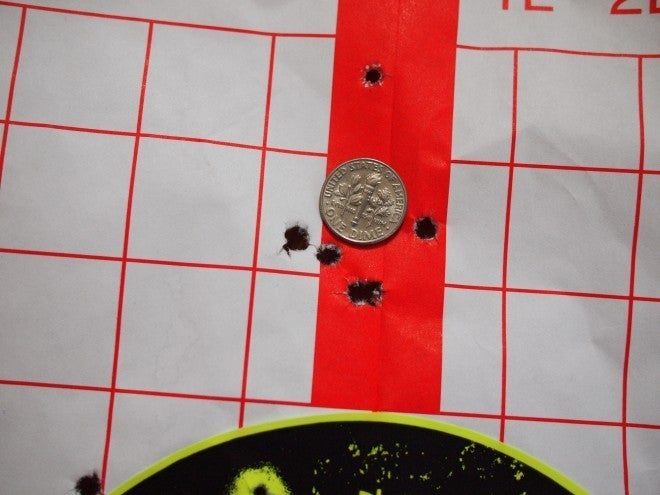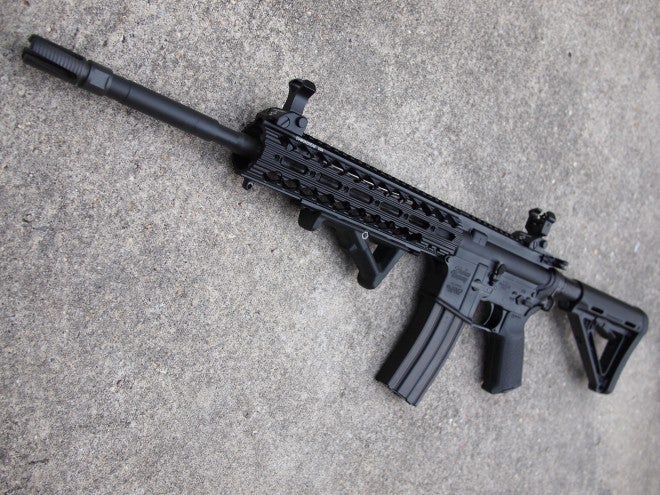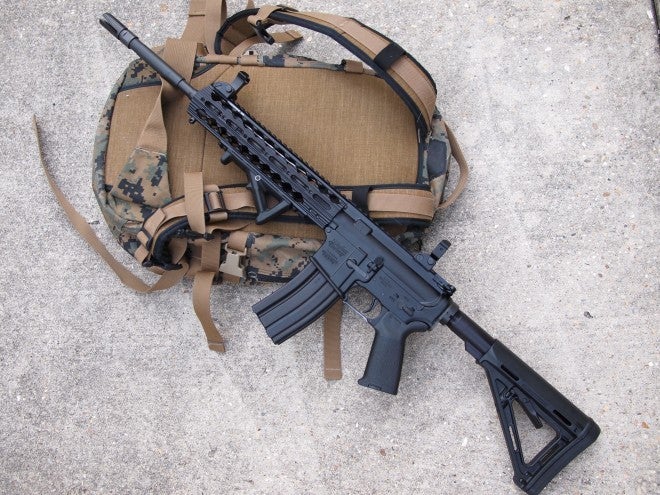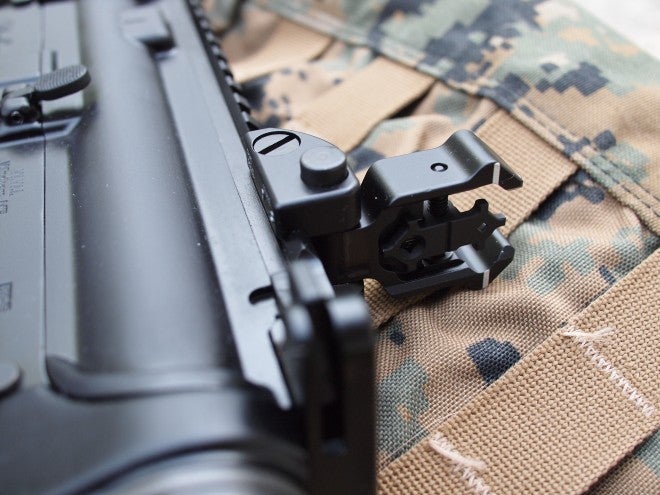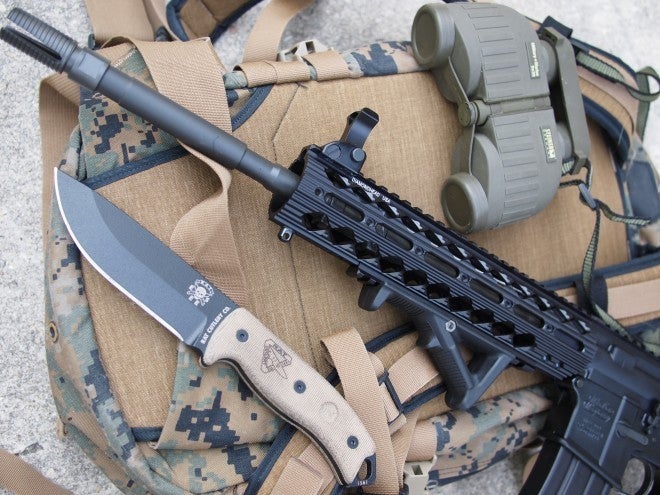Introduction:
In 2010, prominent AR15 manufacturer Bushmaster Firearms announced that it was moving its manufacturing operations from Windham, Maine to Ilion, New York. This relocation came at the behest of Freedom Group, Inc., who had acquired Bushmaster (with a host of other gun companies including AR15 manufacturer D.P.M.S.) near in time to the announcement that operations would be moving. The 73 employees working for Bushmaster’s Maine plant were going to be laid off and the plant closed, in what was called “a great economic loss to southern Maine” and “a blow to the community”.
Rather than hang up his boots, Richard Dyke, Bushmaster’s original chairman and owner, decided to restart operations without delay and with the support of Bushmaster’s laid-off employees. Dyke still owned the property on which the Maine plant was situated and, after obtaining financing, Windham Weaponry was born out of Bushmaster’s Maine ashes. Officially adopting the motto “The Quality Goes In Before The Rifle Goes Out”, manufacturing picked up, and a year and a half later, Windham Weaponry was employing almost as many personnel as Bushmaster had before its new owners decided to leave Maine.
TFB recently received a Windham Weaponry CDI for testing and evaluation, and I was asked to review it. This opportunity struck a chord with me – my very first AR was this Bushmaster XM15E2S (colloquially known as “the Patrolman’s Carbine”), which Bushmaster manufactured in Maine at Windham Weaponry’s present facility. I fired thousands of rounds through that Bushmaster over several years without a single issue. Accordingly, I expected a hint of that performance from Windham’s CDI during my brief eval. In the end, I was not disappointed.
Specifications:
The .223/5.56x45mm Windham Weaponry CDI, Model No. R16M4SFSDHT, weighs seven pounds dry at a length of 36.125″ with the stock fully collapsed. Although I haven’t discussed the multiple upgrades this rifle comes standard with, note that the CDI weighs only a tenth of a pound more than the traditional, non-modified Colt 6920 (essentially a 16″ M4). I was surprised at how light and easy to handle this rifle was right out of the box, especially considering the fact that a robust Diamondhead free-floating handguard enshrouds the first ten inches of the barrel.
The upper receiver is an M4A4-type “flat top”, allowing for easy optic mounting, while the lower is forged 7075 T6 aluminum. The receivers are coated in what Windham calls a “Hardcoat Black Anodize Finish,” which looked very nice, but not unconventional. The bolt is made from Carpenter 158 steel, which is mil-spec. There is no indication on the bolt that the bolt was magnetic particle inspected (such as an “MP” inscription) if that matters to you.
The bolt carrier is marked “JC” and is, according to WIndham Weaponry, manufactured by J.C. Machine of Phoenix, Arizona. The bolt carrier appears to be an M16 type, which is more desirable than the typical AR15-type carrier. (No, an M16 bolt carrier does not make your AR15 a full-auto.) Interestingly, J.C. Machine appears to have a relationship with Windham and P.O.F., another highly respected AR15 manufacturer. While the bolt carrier is quite sturdy, the gas key staking looks a little light, but not problematic.
The barrel is a 16” M4 profile, and it is chrome lined and crowned with a Vortex flash suppressor, regarded as one of the most effective flash hiders on the market. The barrel is also mil-spec in material – a 4150 chrome moly vanadium 11595E steel with M4 feed ramps for increased reliability. The feed ramps mated perfectly with the feed ramp cuts in the receiver.
This rifle also comes equipped with a Magpul MOE 6-Position telescoping buttstock, a Diamondhead 10.25″ free-float forend with a Magpul AFG Angled Fore Grip, a Magpul MOE black pistolgrip with storage compartment, and matching Diamondhead dual aperture flip-up sights. There is also an ambidextrous sling mount plate fore of the castle nut.
This rifle has a lifetime warranty.
General Observations:
As stated, for a rifle that came so heavily-equipped, the CDI was light and easy to handle. Windham Weaponry incorporated quite a few third party components into this rifle. However, these collaborations appear to be selected with care, resulting in a well-thought-out and well-equipped and complete rifle, not merely a hodgepodge of parts slapped onto a core rifle in order to inflate MSRP or give the rifle a “tacticool” appearance.
First, my favorite extra is the matching set of Diamondhead dual aperture sights. The rear aperture makes a diamond that appears, due to your perspective behind the rifle, to be slightly larger than the diamond-shaped front sight hood. The front sight hood then fits neatly within the confines of the rear peep aperture – think about this a kind of a “nesting doll of death” (for those of you familiar with the “donut of death“). After you align the diamonds, your front sight post should be right in the center of your rear aperture. The sight seems to work almost identically to the HK-style diopter sight, which permits, at least in theory, faster sight acquisition through alignment of two similarly-shaped objects centered around a front sight post. I was very impressed. Note that MSRP on these sights is $260, so they are no small contribution to the hefty $1600+ MSRP on this rifle.
Of more general interest would be the Diamondhead freefloating handguard. This rifle comes standard with the Diamondhead’s VRS™ “X” Free Floating Handguards. The receiver-to-rail extension was aligned and uninterrupted, so there would be no issues with front/rear sight alignment or mating a magnifier to a red dot optic. As the handguard is a free-floater, there is no accuracy decrease or point of impact shift when a bipod or rest is used while shooting – a common, if not uniform, issue with non-free floating handguards.
Further, this rifle comes with a nice set of fore and aft Magpul furniture – the MOE stock, pistol grip, and AFG. This trio of accessories is a common first upgrade for most AR owners, and while many who buy the CDI may ultimately elect to get a more “involved” stock than the base-model MOE, the MOE pistol grip with storage compartment is hard to improve upon, and the Magpul angled foregrip theoretically offers enhanced performance over the more conventional vertical foregrip (or no foregrip at all). And even if the MOE stock does not bring with it the features offered by Magpul’s more expensive stocks, the light weight, cost economy, and durability of Magpul’s entry-level MOE make this a sensible inclusion. Moreover, an MOE stock is easy to sell on the second-hand market should the CDI owner ever look to upgrade. Accordingly, these Magpul parts are smart and welcome additions.
Other useful extras are the Vortex flash hider, which is considered one of the most effective on the market for flash suppression, and an ambidextrous sling plate installed where the buffer tube meets the lower receiver.
With all of these accessories, there is virtually nothing to add except an optic or, should you require it, a light source. The only accessories I could think to add might be a Magpul BAD Lever, an H buffer (the CDI comes with a standard carbine weight buffer), and perhaps an improved charging handle, and none of those items would be essential. I would be confident enough with this setup to buy it, throw on an RDS, and leave it alone. All of your bases are covered vis-a-vis common AR upgrades, and with top-notch components to boot.
But how does it shoot? I ran twelve boxes through the CDI at the range, shooting with only the irons at 50m, 100m, and concluding with the “Quick and Dirty AQT” at 25m. I did not experience any malfunctions or issues during this range session. The trigger was fine – just the standard GI single stage trigger common to all mil-spec type ARs. Accuracy on this gun was also on par with other ARs in this price range and class, with the most impressive five-shot group of the day coming in at almost exactly one inch, with four of those rounds fitting within a .7 inch dime-sized group – and that was with cheap Wolf steel-cased 55gr. ammo. Shooting from a bench rest and with brass cased ammo of higher quality, I’d say that this rifle would certainly shoot under 2 MOA at any range, similar to expected accuracy from other quality M4-type ARs that haven’t been accurized or sporterized in any way.
The Diamondhead sights were very impressive, and offered a great balance of fast target acquisition using the diamond aperture and hood combo and precise aiming after orientation of the front post. The AQT reinforced my observations about the effectiveness of these sights.
As stated, handling was excellent, as this rifle is lightweight and well-balanced. Because the Diamondhead handguard is free-floating, supporting the barrel in any way leads to no discernible point of impact shift.
Negative Observations:
While I have no negative observations about the CDI per se – it is pretty close to perfect right out of the box – I always try to identify where a product could be improved after I review it.
The only modification I would make to the CDI would be to change the gas system from a carbine length to a midlength. Moving the gas port forward two inches would decrease felt recoil without affecting reliability, as the CDI uses a 16″ barrel that can function with a “middy” system. Additionally, as the CDI comes standard with a 10″ free floating handguard, the gas system would still be housed under the handguards even if it were moved forward two inches to accomodate a midlength gas tube, and the only weight that would be added would be a couple of grams from the 2″ of additional gas tube.
Windham Weaponry probably does this as a cost-saving measure, as I would imagine the 16″ M4 profile barrels are more common in the carbine length gas system, and it would further allow a manufacturer to easily chop down a 16″ barrel to a government-standard 14.5″ should a large military order come in. However, this is just my personal speculation. A representative of Windham Weaponry responded directly to this exact inquiry on AR15.com as follows:
We chose to first build rifles of the mil-spec carbine dimensions. This is a system that has been working since the 1960s and the vast majority of upgrades fit onto this length system. I can’t find any evidence that a carbine length gas system is any harder on the carrier than a rifle lengh (or mid length for that matter). I’ve got 7500 rounds through one of our carbines so far without replacing any parts and it’s still going. We may offer a mid length at some point in the future but right now it’s all we can do to keep up with the demand of what we currently offer.
That said, I agree with Windham’s observation to the extent that recoil was not noticeably greater between the CDI and my mid-length ARs, although I admittedly did not shoot them side by side. A couple of my female concealed weapons students had the opportunity to shoot the CDI at the range, and were clanging the 12″ steel gongs at 100m after only a few minutes of instruction. They felt the recoil was minimal, and were sad to find out the CDI had to go back to Maine after eval. Also note that the 16″ M4 profile barrel with a carbine gas system is not unique to Windham Weaponry, rather, this configuration is a very common setup across all manufacturers. Further, while a mid-length profile might be preferable, the benefit might not outweigh the potential increase is production cost, whatever that may be.
Also, AR performance zealots might bemoan the 1:9″ twist barrel, but that’s no reason to discount the CDI unless you plan on shooting the heaviest of match rounds through this AR. The 1:9 will handle the standard 55gr and 62gr target rounds as well as or better than the 1:7″ mil-spec twist. This 1:9″ twist is also extremely common, probably more so than the 1:7″.
Conclusion:
Just like my first AR – a Bushmaster Patrolman’s Carbine almost certainly made in the same factory as this Windham Weaponry CDI – the CDI appeared to be a quality AR that shoots well and handles well. Unlike my Bushmaster, however, the end user doesn’t need to add a thing to get the CDI in fighting shape out of the box. The CDI comes with a bevy of well-thought-out accessories already bolted on at the factory. From the more critical aspects of operation such as iron sights, which are the superb Diamondhead dual aperture flip ups, to the less critical (but oh-so-important in terms of cool factor) upgrades such as the Magpul furniture, this CDI looks like it was well-planned from the start. For example, while many manufacturers might have been to content to slip a two-piece quad rail under the delta ring with the hopes that the buyer would be attracted by the tacticool look, ignorant of the drawbacks of a non-freefloating handguard, Windham decided to go all the way, adding a robust, monolithic free floating 10″ handguard that will not negatively affect accuracy or shift POI like a two-piece handguard might.
The CDI’s trigger, fit, finish, and accuracy were within range of other high-end AR manufacturers such as Stag/CMT, LMT, BCM, Bushmaster, Rock River, and et cetera. Although the CDI’s MSRP is nearly $1,700, street price is in the $1,200 range. Given that some stock, plain ARs are about $800-$1,000, the CDI is a good deal when you factor in the extras like the Diamondhead parts, Magpul furniture, the Vortex and the ambi sling plate – totaling somewhere between $500 and $600 in parts before installation. That’s all based around a good core with not-often seen mil spec extras such as the 158 Carpenter steel bolt and 4150 chrome moly vanadium 11595E steel barrel with M4 feed ramps – huge but little-known bonuses that are ignored by entry level ARs to cut production costs. Although novice AR builders may be able to assemble something similar for a little bit less money, that doesn’t account for the trouble involved with the build, and moreover, it is unlikely that an AR tweaker would be interested in a fully-accessorized rifle to begin with anyways.
In closing, it looks like Windham stays true to their motto – quality goes in before the gun goes out, and this CDI was consistent with that philosophy. The CDI was well made with a very sophisticated and unique accessory set. If every Windham rifle is as well made as my sample CDI, I anticipate that Windham will continue to grow in the space where Bushmaster was born.
We are committed to finding, researching, and recommending the best products. We earn commissions from purchases you make using the retail links in our product reviews. Learn more about how this works.
 Your Privacy Choices
Your Privacy Choices


